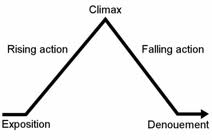As we embark on a new fall term here at Metro Community College and many students will be taking their first college English class, let’s talk about what actually makes good writing. Of course, there are many variables in effective academic writing, but below, we’ll discuss writing in relation to freshman writing expectations.
First Things First: Follow Assignment Guidelines
Has your instructor given you assignment directions, either in the syllabus, or a separate handout in class? Perhaps your instructor will assign reading from your text, and ask you to follow the guidelines in the assigned chapter. Assignment directions should be read, re-read, and critically analyzed if you expect to meet the instructor’s expectations. We see numerous low marks on well-written essays that fail to follow the assignment guidelines. If your guidelines direct you to write a “critical analysis” of a short story, and you write a “summary,” your grade most likely will reflect this oversight.
Use Standard Written English
You might think this is obvious, but many beginning writers fall into slang, colloquialisms, and even text-speak when writing. You most likely know and unconsciously follow the rules of standard written English, but it’s easy to fall into ingrained speech patterns when we write. Slang is perfectly acceptable for conversation, but in writing, it can get in the way of the writer’s message and distract the reader. In persuasive writing, falling into an informal tone or slang will lead your reader to conclude your writing shouldn’t be taken seriously.
Write Effective Sentences
What makes an effective sentence? It’s about choosing the best words, understanding parts of speech (noun, pronoun, verb, adverb), and organizing the words in the most logical order.
In contrast, ineffective sentences often utilize poor word choice, confuse parts of speech, and organize the words in illogical and sometimes grammatically incorrect order.
One of the most common punctuation errors made in freshman writing classes is a comma splice. A comma splice is incorrect punctuation created by combining two independent clauses with a comma to separate the two clauses. An independent clause is a full sentence, containing a subject and predicate (ex. noun, verb, object). If you are not able to identify what parts of speech make up a sentence, you will most likely have grammatically incorrect sentences.
To learn more about sentence-level issues, click here to read more.
Write Effective Paragraphs
Effective paragraphs are unified, focusing on one main point. In persuasive writing, the one main point of the paragraph will support one main idea from your thesis.
An effective paragraph is cohesive, each sentence logically flowing from sentence to sentence. In turn, each paragraph should logically flow one to the next with effective transitional sentences.
Effective paragraphs are fully developed, containing enough information to fully convey the main idea of the paragraph in a thorough way. In research papers, direct quotes are smoothly integrated into the text, and contextualized in the writer’s own words. Paragraphs avoid beginning or ending with direct quotes.
Effective paragraphs utilize topic sentences, commonly the first sentence of the paragraph, though it may come later or be implied. To read more about introductory and concluding paragraphs, click here.
Know Your Audience
Effective writers understand who their audience is and what they know about their topic. If you are writing a persuasive essay to lower the drinking age, a reading audience of your state’s alcohol commission would be persuaded with a different line of reasoning than a group of seventeen-year-olds. Effective writing always takes into consideration who the audience is, what they know, and how they feel about their topic.
Writing is a Process
When we write, we do more than sit in front of a blank computer screen and type. Thinking, planning, drafting, and revising are all part of the process of writing effectively. Most college-level writing classes will expect you to write several drafts of your assignment, and may require you to turn in each draft for assessment. Waiting until the night before the due date to begin writing a college-level essay can be a costly mistake.
Final Thoughts
If you feel your writing skills are lacking or need improvement, don’t wait to seek help. Your instructor may be able to offer assistance, or visit your writing center for help. You can visit writing centers at any stage of the writing process, even to brainstorm topic ideas.
If you have questions, ask! Guaranteed, if you have a question, others do as well, but may be too embarrassed to ask.
Below, you’ll find links to more online resources.
Purdue Owl Online Writing Lab – A wonderful resource for anything writing-related.
Bedford St. Martin’s – Tutorials on grammar, punctuation, and other writing-related topics.
Grammar Girl: Quick and Dirty Tips – A popular and easy-to-understand website on all things writing.
MCC Writing Center – Our own Writing Center’s website with a link to student resources.









